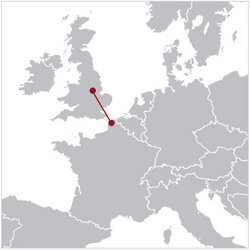World's best lace thanks to Nottingham contraband
Calais is the only town in France, where plum pudding is (still) served on Christmas Day! The amazing custom is closely linked to a revolt of unemployed weavers in Nottingham, England in 1811, who rage against new types of machines that mechanize the hand-made production of tulle. Tulle is used as a net ground for fine lace fabrics, a commodity Nottingham's textile industry has specialised in with increasing productivity thanks to the new technology.
Robert Webster operates the innovative tulle looms in his factory in Nottingham too. In 1816, in order to protect them from the marauding weavers, he smuggles them along with their staff and the latter's Christmas passion for plum pudding across the Channel to Calais in northern France, thus evading Napoleon's continental blockade and, most of all, the harsh English border patrols. For at that time, the homeland of the Industrial Revolution is imposing the death penalty for exporting technological know-how.
In Calais, at that time completely bare of any textile tradition, Webster reinstates his looms - and thus establishes the rapid development of the city into one of the world's leading centres for the manufacture of high-quality lace. Another crucial role in this is played by the French inventor Joseph-Marie Jacquard (1752-1834), who introduces punch-card programming to the English looms to enable any conceivable pattern to be woven into the tulle.
This exciting story is told by the Museum for Lace and Fashion in Calais. A similar museum is also being planned at Nottingham. The Nottingham Industrial Museumalready set up there displays originally preserved stocking frames, Bobbinets and lacemaking machines and their technical advancements.








